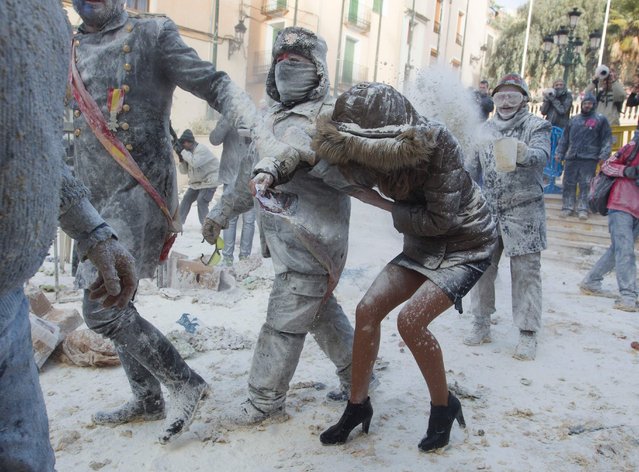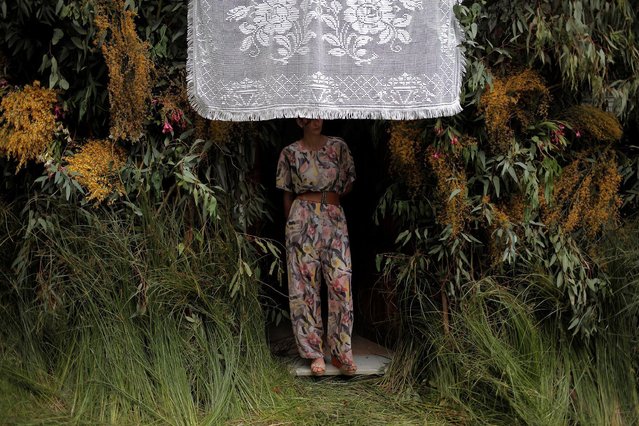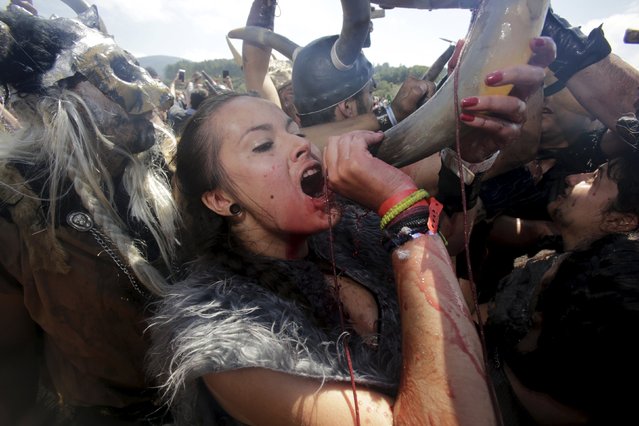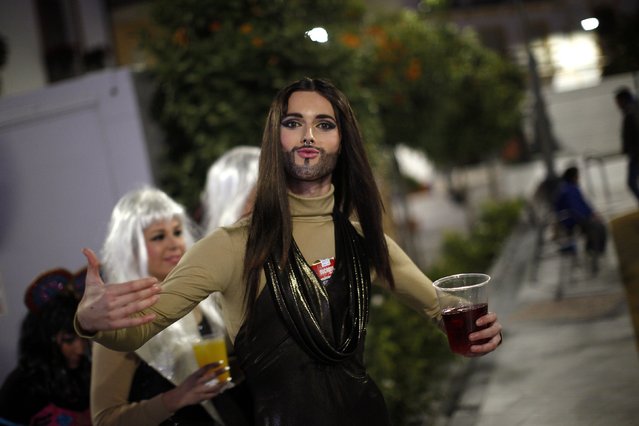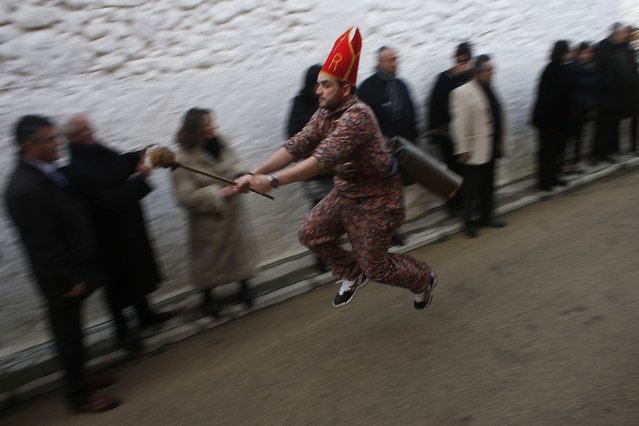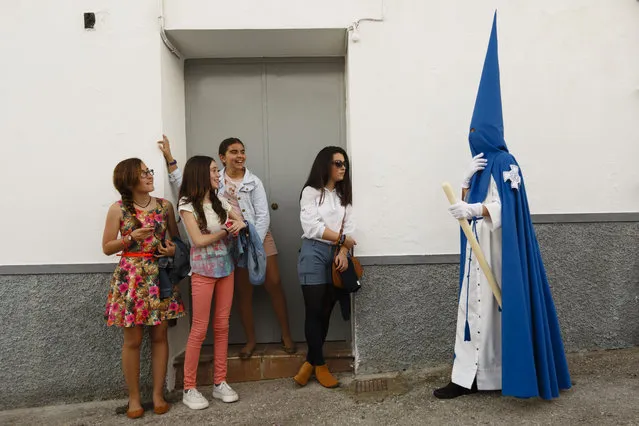
Revelers take a selfie during a Holi Festival in Madrid, Spain, Sunday, April 26, 2015. The festival is based on the Hindu spring festival Holi, also known as the festival of colours where participants colour each other with dry powder and coloured water. (Photo by Andres Kudacki/AP Photo)
27 Apr 2015 10:34:00,post received
0 comments


